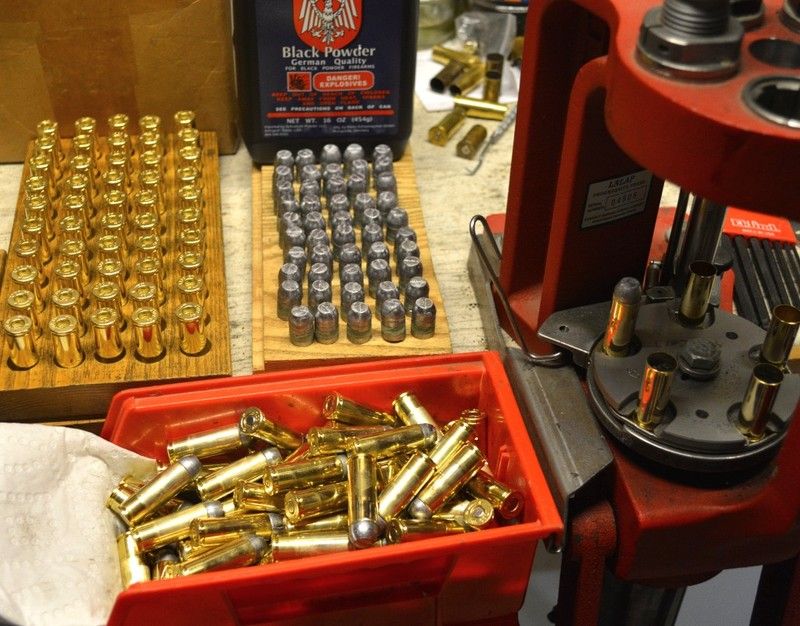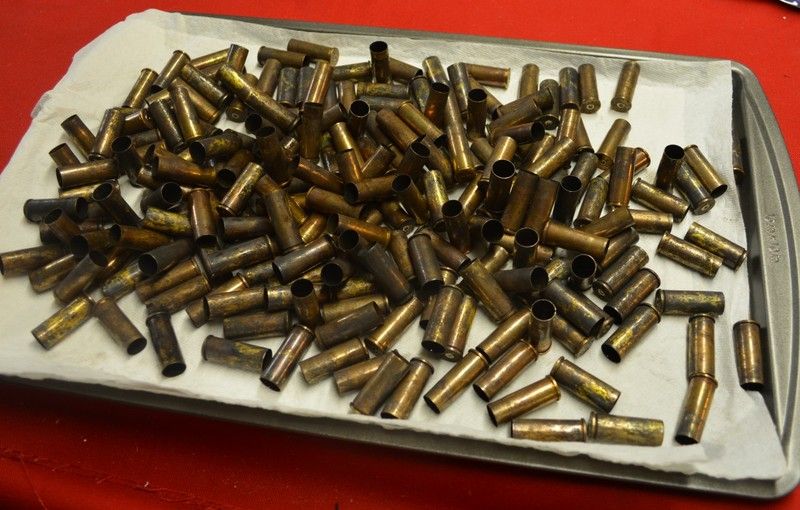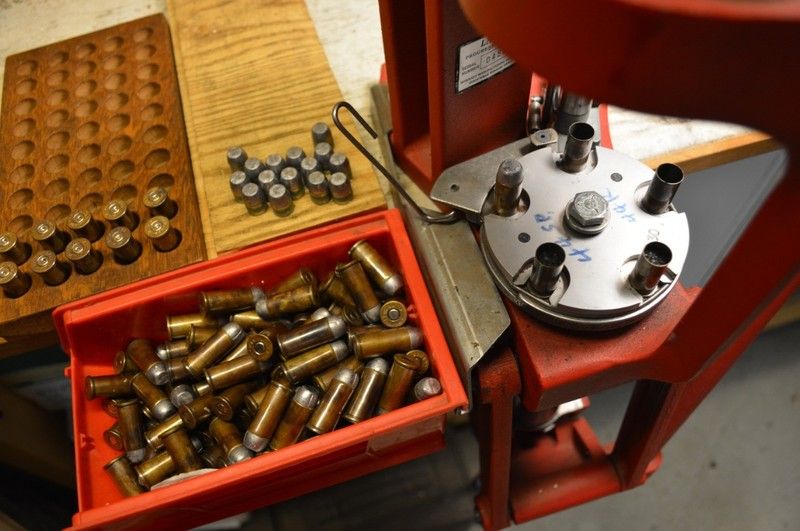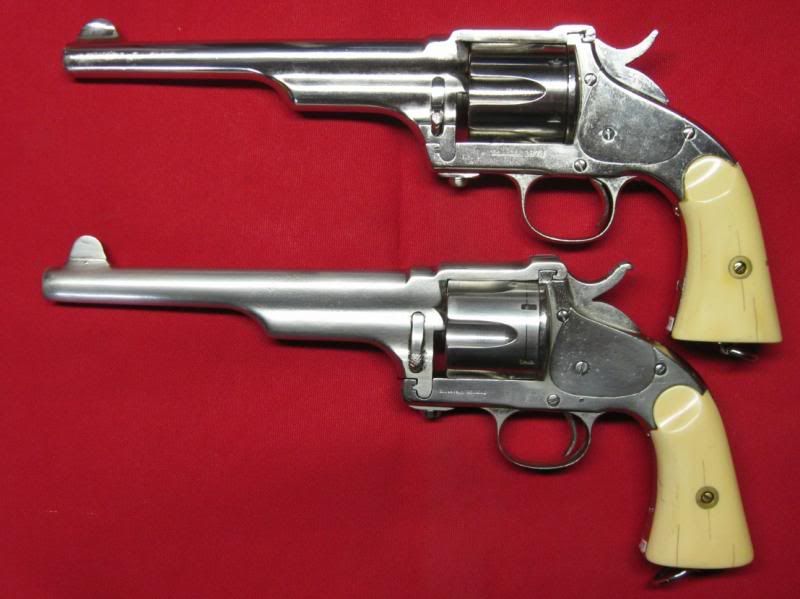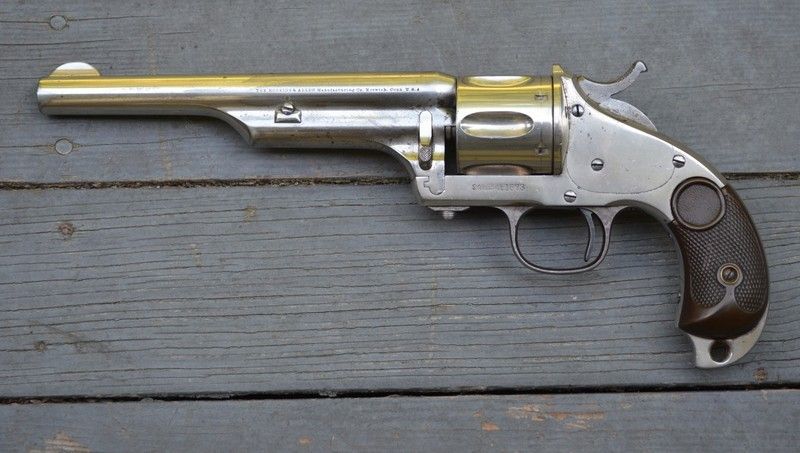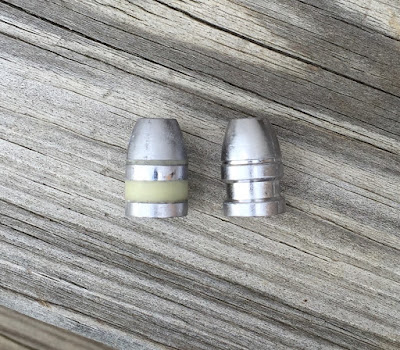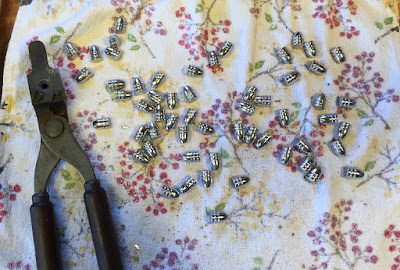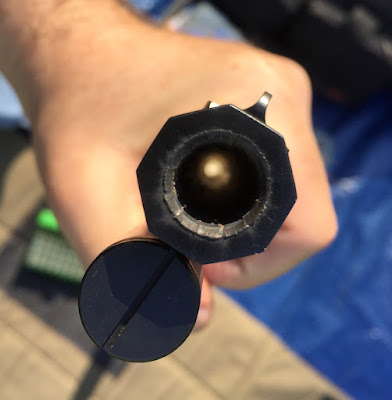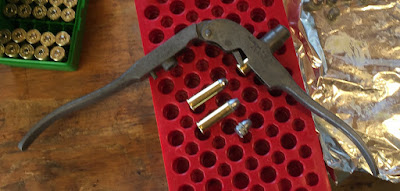Howdy Again
I was going to cover cleaning brass when I got around to talking about cleaning the guns, but this is as good a time as any to talk about cleaning brass.
Brass is more susceptible to corrosion from Black Powder fouling than the steel of a firearm is. I will go into how you don't have to clean the guns right away when I get to cleaning, but for now, take my word for it.
In my experience, brass that has been fired with Black Powder will corrode if left untreated for 24 hours. It will get a greasy coating of green verdigris (copper carbonate), if left untreated for 24 hours.
The solution is simple, drop the fired brass into a jug of water. I always add a squirt of dishwasher soap to the water in my rinse jug.
Here is a photo of my jug filled with fired brass after a typical CAS shoot. Notice how the water is cloudy with suspended BP fouling.
Some say to add vinegar to the water, to keep the brass shiny. I
do not recommend that. If left in contact with brass for any period of time, the acetic acid in vinegar will leach some of the copper out of the brass, making it brittle. I just use soapy water.
Some guys drag a jug of water around at a match all day, dropping the brass into the jug as soon as they have fired it. That is overkill. The end of the match is plenty of time, no use dragging a jug of water around all day, back at the car at the end of the match is plenty of time.
When I get home I repeatedly rinse the brass until the rinse water runs clear. Notice how cloudy the water is in my photo. Some guys will use terms such as neutralizing the chemicals in the BP fouling. That is incorrect. The name of the game is diluting, not neutralizing. Neutralizing means the pH of the solution is brought to 7, neither acidic or base. That is not the point. The point is rinsing the brass a bunch of times until the fouling on the brass has been dissolved, diluted and washed away. I have a sieve that I use to rinse my brass. In the kitchen sink I dump the brass into the sieve, and pour out the rinse water. Then I dump it back into the jug and fill the jug with fresh water. After four or five rinses, or when the rinse water is clear, the fouling will have all been washed away. Then I set the brass out on a cookie sheet lined with paper towels to air dry.
Once it is bone dry, I run it through my tumbler with Lizzard Litter (a cheap form of walnut shells) no different than Smokeless brass.
I try to rinse the brass soon after the match, the longer it sits in the dirty water the more stained it gets.
I will state one caveat. After firing with Black Powder, and sitting in the jug for a while, the brass will be stained dark by the fouling. As I say all the time on Cowboy forums, shiny brass does not shoot any better than stained brass, it is just easier to find in the grass when ejected from a rifle. If you want shiny, like new brass, you need to add some sort of polishing agent to the tumbler media. That's why guys add vinegar to the rinse water, but I do not recommend that.
Here is a batch of 45 Colt being loaded into brand new, shiny brass.
Here is a mixed batch of 45 Colt and 44-40 brass that has been fired several times, rinsed until the rinse water was clear, then air dried. Some will think it looks terrible, I have no problem with it, it shoots just as good as shiny brass. It will look better after tumbling, sorry I don't have a photo of that.
Here is a batch of 44 Russian being loaded into stained brass that has been fired a bunch of times. If you want shinier brass, add some polish to the tumbling media. I don't care about shiny, this stuff shoots fine out of my antique S&W Top Breaks.
One more thing. Some guys will deprime their brass and clean primer pockets before soaking it. The idea is to remove any build up of fouling in the primer pocket that may interfere with the primer seating properly, possibly resulting in a misfire. I load most of my ammo, both BP and Smokeless, on a progressive press as seen in the photos above. There is no provision on a progressive press for depriming and then removing the brass to clean out primer pockets. If you want to do that, it makes more work. I take my rinsed and dried brass and run it through the press without any primer pocket cleaning. So far so good, in almost ten years of shooting BP cartridges, I have never had a misfire because a primer was not seated properly.
That's pretty much it for cleaning brass that has been fired with Black Powder.

